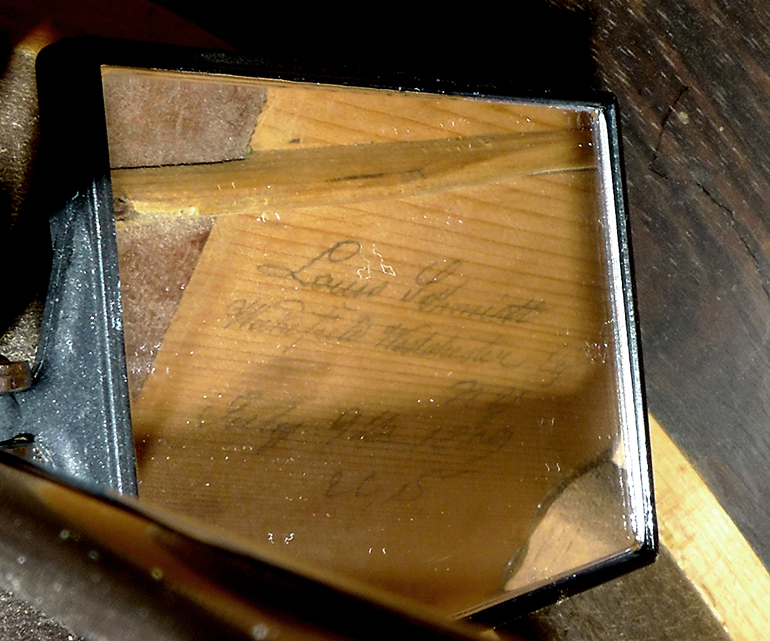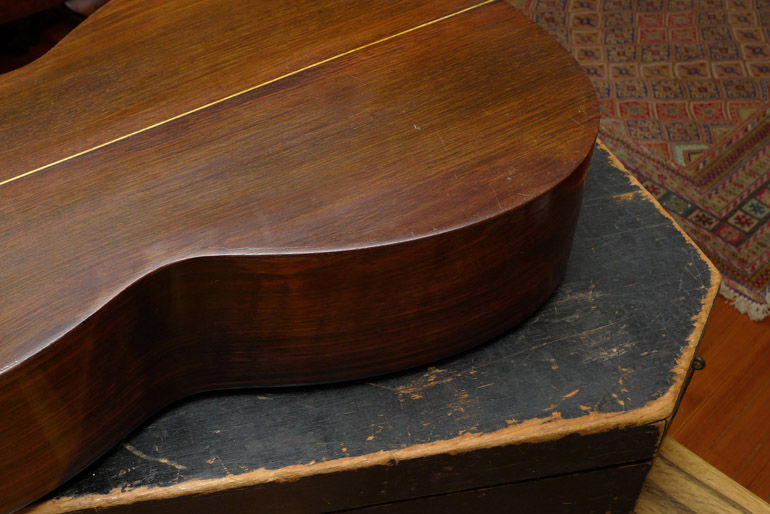This guitar is the last known guitar in existence, made by Louis Schmidt, the famous contemporary and one-time colleague to the founder of Martin Guitars, the original C.F. Martin. As such, it is a rare example of early American guitar making. And it’s signed by the maker, on the underside of the Adirondack top:
Louis Schmidt
Wakefield Westchester Cy
NY
July 9th 1859
U.S.
Louis Schmidt worked side by side with CF Martin in the early years. Perhaps the most common misconception about early American guitar history is that C. F. Martin spent his first years in America earning a living as a solitary luthier in his New York workshop. Pay ledgers reveal that as early as 1834 he was paying luthiers to help him make his guitars. Two of these men, Heinrich Schatz and Louis Schmidt, left Martin’s employ to make guitars on their own, and each succeeded as top builders.
This instrument:
- Similar features to circa 1860 Martin 17 style… but different purfling, binding, and slightly different body shape
- All original finish
- Brazilian rosewood back and sides (solid); Adirondack top
- In its original coffin case
- 11 3/8 inches wide at lower bout (a bit larger than a Martin 2 1/2)
- Body: 3 7/8 inches deep
- Original mahogany bridge plate (goes almost all the way across the width of the top, slotted under all the braces)
- Fan bracing pattern
- Plays beautifully. Good bass tone. Action is perfect.
- Ebony Bridge has been off at some point, and reglued on. With a lack of similar guitars on the market, it’s not known if this 19th century bridge on the instrument is the original bridge.
- One repaired crack on top, from bridge to bottom binding; One repaired crack on back. One small crack on top, either top edge of soundhole.
- Original Jerome tuners, reverse gear, working perfectly
- Maple and rosewood purfling/binding on top (no binding on back)
According to all known writings and records about Louis Schmidt in existence prior to the discovery of this guitar, Schmidt was supposed to have “disappeared from the scene in 1858”. This newly surfaced guitar, the last one we know of from his hand, proves otherwise, and is a great example, still in its original case, of the work of this well known and important early American luthier.











